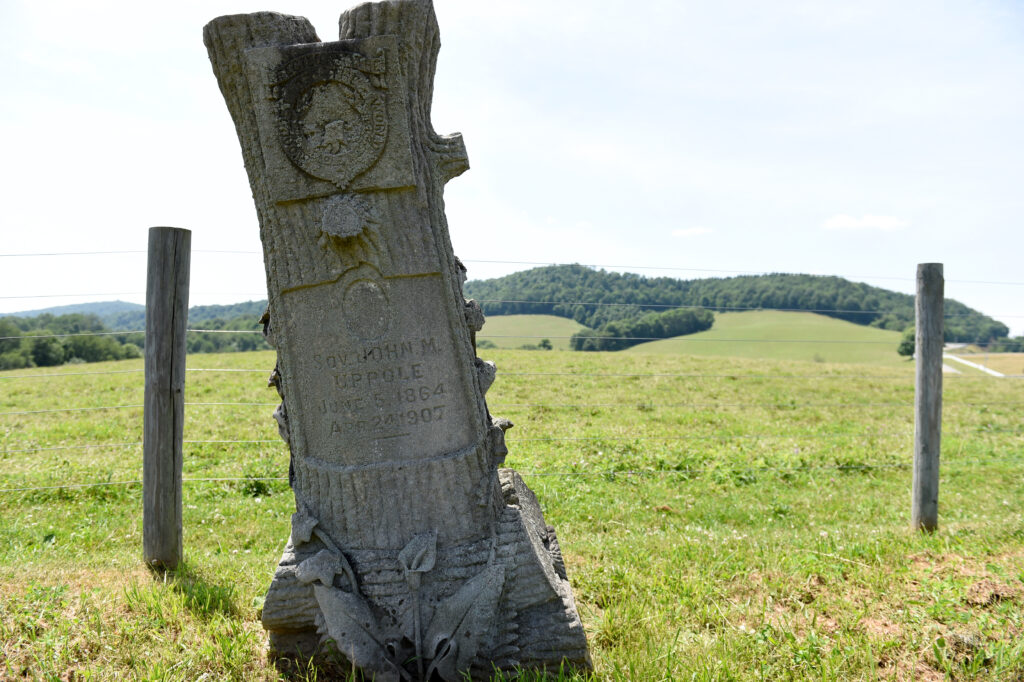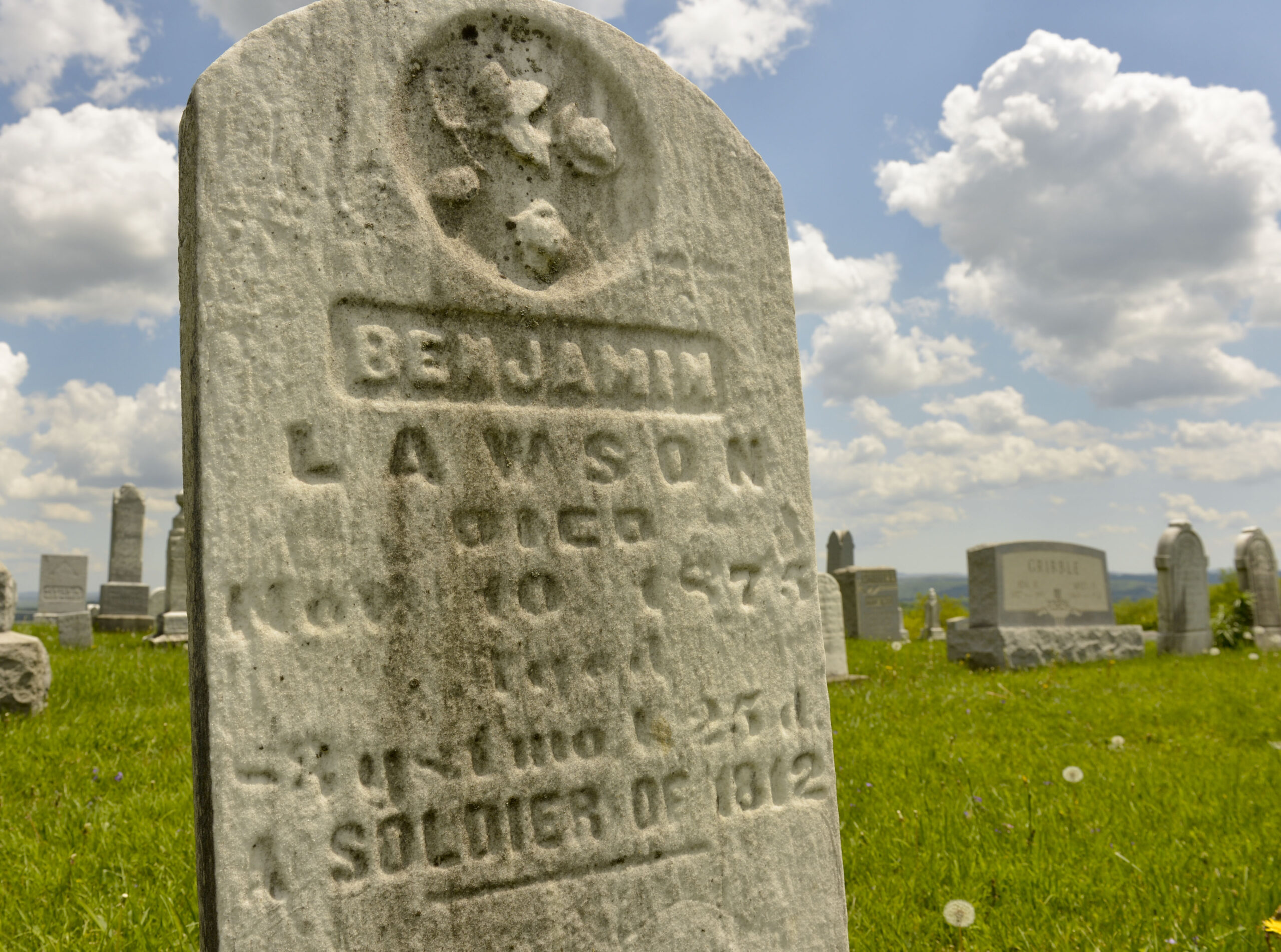Local author studies history through graveyards in W.Va.
KINGWOOD — For some the word cemetery conjures up visions of crumbling headstones, rusted gates, owls and ghosts.
Janice Cale Sisler, author of In Remembrance: Tombstone readings of Preston County WV Vol. I, II, and III (Vol. III is sold out, Vol. IV is in progress), said cemeteries are archives.
“When I started looking for the resting places of some of my extended family I saw that their burials were indicated as Rohr, West Virginia. I had never heard of Rohr. Called Cale, the cemetery is now known as Mount Zion. It was the first cemetery we did a complete listing for in 1969. My husband, Ben, held an umbrella over me to keep off the sun knowing that I wouldn’t be able to quit until I had done it all. That was more than 50 years ago,” she said.
Cale said each grave marker, each cemetery, was so interesting she had to keep going.
She said the people’s stories, when she can find them, are life lessons.
”As interesting, as significant as they are, not all of them are easy to reach. So many old cemeteries are neglected, over grown, high on the hills, full of holes, covered with trees, grass, creeping plants, poison ivy, briars that hide the holes, broken, eroded and leaning stones,” Cale said.
According to Ancient Origins.net the oldest “true” cemetery in the world, (where people were buried together) is in Germany. Gross Fredenwalde is from the Mesolithic Era and about 8,500 years old.
Preston County doesn’t have a cemetery quite that old. It does, however have its share of cemeteries with interesting stories to tell.

Whiskey, too soon buried and a tombstone war
“At Mount Moriah there is a (above ground) tomb which allegedly before it was occupied was a place to pick up whiskey in the days of Prohibition. The first person buried there was Mrs. Martin. It is alleged that when she died, she was put in a coffin with a glass top placed on two chairs at the home.” Sisler said. “The local ladies, as was customary, sat with her body all night. They wondered why they had to keep wiping moisture off the glass. The next day she was buried on the farm.
“That night the dogs howled. The farmer looked out but didn’t see anything. When the Mount Moriah cemetery was begun, Martin’s husband had her body moved to the cemetery. When they opened the box, they found the lining of the coffin in shreds.”
Another story involves a tombstone war.
“In another cemetery, Armeda was buried. A tombstone was placed by her husband. Her father took off that tombstone and placed his own. Husband took it off and replaced his, then father did the same. They seem to have continued replacing each other’s stone until they were no longer able,” Sisler said.
She said one landowner took the tombstones off the plot on his farm and threw them over a bank. He was ordered to replace them but only two survive.
Cale said there are reports of tombstones being used as walkways or the foundation for a corn crib. One tombstone was found under a grape arbor.
“Some people so desperate to have markers for ancestors whose burial places are unknown have installed tombstones in cemeteries of their choice, not marking that monument as a memorial. Such is the case at Masontown cemetery with the markers for William Taylor (1796-1849) and Nancy Rood. Also at Centenary for John Groves (1785-1835) and Eva Groves (1801-1861,” Sisler said.
“I am so grateful to those who take care of cemeteries whether they are related or not. And I am sad when those buried at that site have no markers or only field stones,” Cale said.
“I want to know who they were. I think there may be as many unmarked as marked graves in this county. Some cemeteries are now obliterated, some by nature, some by landowners tired of plowing around them, some by strip miners and one run through by a fire truck.”

Searching for kin
She said people often contact her to find where a relative is buried.
“Some would be surprised to know how many people come from all over the U.S. to stand where their ancestors rest. My most recent visitor last week was from Indiana, the one before that from Iowa with his grandson who will never forget the trip,” Cale said.
“They stop here or call here because their cemetery is hard to find due to the terrain. Most don’t stop here. They stop at various places. These tourists add to the local economy while they are here. Those who can’t come in person write or send emails.”
She said her final trip with her husband to do listings was in Pisgah.
“In February 1999 there was a nice day. Ben and I went to Fairview Cemetery at Pisgah to do another installment of listings. As we left for the day, he said, ‘We’d better hurry back and finish this one. I’m not going to do any more.’
He had a right to be tired of the job. Five days later, he was dead. After a while I went back and put one foot in front of the other until I finished it,” she said.
Sisler’s books can be found at Amazon.com, Pennalps in Grantsville, Md., or write Janice Cale Sisler, P.O. Box 118, Bruceton Mills, WV 26525 or call 304-379-6612.
TWEET@DominionPostWV




